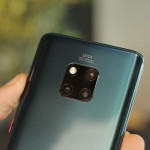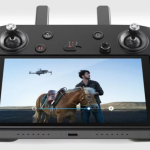
OUR VERDICT
The Zenbook 3 looks the part of a slick and powerful ultra-portable laptop, only with a mushy keyboard and odd fingerprint sensor placement.
FOR
- Crystal clear display
- Lightweight and very portable
- Reliable fingerprint sensor
AGAINST
- Weird fingerprint sensor placement
- A single USB-C port
As the best Ultrabooks get thinner, lighter and more powerful every year, the Asus ZenBook 3 is a great example of the progress they’ve made. Who wouldn’t want a faster laptop that can handle everything you throw at it? It’s a compelling sales pitch made by the likes of the Apple MacBook Air and Dell XPS 13.
And, while these thin and light laptops are certainly more expensive, we think it’s worth not having your back yelling at you for hauling around a 15-inch behemoth wherever you go.
The Asus ZenBook 3, much like other thin and light Ultrabooks, comes with some inherent compromises. Ports have vanished into thin air, and battery life is shorter than on more portly laptops. However, this is all outweighed by the gorgeous build – we still find ourselves gawking at the beautiful display after checking our bags in a frenzy to make sure we didn’t leave it on a desk somewhere.
Price and availability
In the US, the ZenBook 3 starts at $1,599 (about £1,499, AU$1,598) with the specs we tested in this review. In Australia, the specifications are similar, save for memory. Instead of the same 16GB that ships elsewhere, the Australian model ships with 8GB, and you can find it for AU$1,995.
However, because the Asus ZenBook 3 is about a year old at this point, you should be able to find refurbished models for heavy discounts all over the internet. You can find it for less than the new MacBook Air, for stronger hardware.
Even before any discounted pricing, the ZenBook 3 costs less than the Apple MacBook while also being more powerful – though it’s almost twice the starting price of the Dell XPS 2017.
Design
While we were working on this review, we took the Asus ZenBook 3 on a trip from Colorado to New York, replacing a Macbook Pro with Touch Bar for the brief trip. There were several times that we frantically opened our backpack, triple-checking to make sure we didn’t leave it behind somewhere.
At just 11.7mm thin, the ZenBook 3 is deceptively light. Looking at its size, and considering its metal housing, it’s easy to expect it to have a reassuring weight to it. And, then you pick it up, and realize that, at only 2 pounds, it’s one of the lightest laptops out there.
So, the ZenBook 3 is pretty similar to the MacBook in this respect. It’s very thin, has a full-metal chassis and a single USB-C port on the right side of the laptop. That port is used for charging the Asus ZenBook 3, connecting external accessories and everything else you may want to connect – frustrating, to be sure. On the left side is a combo 3.5mm audio jack.
On the top-right corner of the touchpad is where you can find a fingerprint sensor for signing into the ZenBook 3 using Windows Hello. The placement is odd, and can get in the way when dragging your finger across the pad. It won’t directly impact the touchpad’s functionality, but it does break up the otherwise smooth surface and just feels out of place.
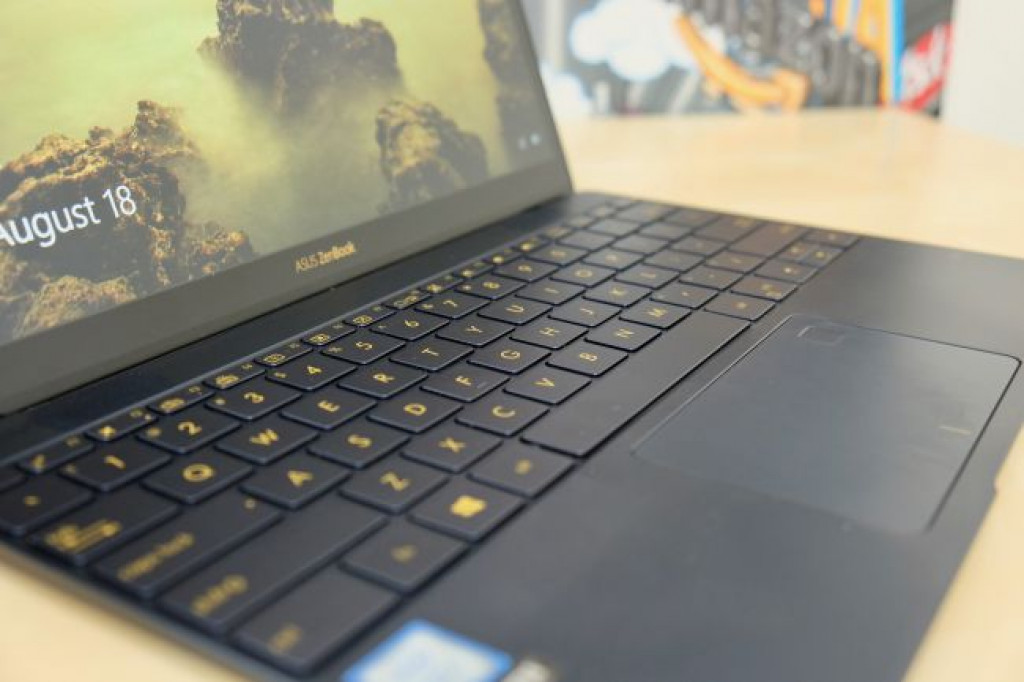
Dongle life
However elegant the Asus ZenBook 3 is, it rocks just a single USB-C port, so doing something as simple as syncing and charging your device at the same time is impossible without a dongle. Asus does sell plenty of accessories for this, letting you connect multiple devices while charging, but it’s just another thing you have to buy and remember to pack in your bag.
As USB-C continues to creep into numerous products we use on a daily basis, not being able to connect more than one item to a laptop at a time is still a limitation.
Mushy keyboard
We’ve become accustomed to lightly pressing a key, and having it quickly bounce back with minimal effort after using Apple’s Butterfly keyboards. With the Asus ZenBook 3, Asus tries to mimic this effect – but the end result is, for lack of a better term, mushy.
The keys don’t quickly spring back into place, nor do they have an equal level of resistance. In other words, the keys feel soft and lead to inaccurate typing before mastering the learning curve.
Intel’s 7th generation Kaby Lake i7 processor powered through anything we put the ZenBook 3 through during our testing. Multitasking was a non-issue, going between tabs and apps without any noticeable slowdown.
Fans, if they were needed, were quiet and not a distraction by any means.
Four Harmon Kardon speakers are found on the ZenBook 3. Two are on the top of the device, just above the keyboard, with the other two speakers found on the bottom of the housing. They aren’t the loudest speakers, but they’re more than enough to listen to music or watch the occasional YouTube video.
Our benchmarks put the Asus Zenbook 3 somewhere in the ballpark of the Dell XPS 13, and in some areas ahead of it. For instance, the Asus ZenBook 3 excelled in both single and multi-core GeekBench tests, but it fell short of the XPS 13 when it came to 3DMark.
Battery life
One of the concessions that’s typically associated with a laptop of this size is battery life. Asus touts enough juice in the ZenBook 3’s battery to get through 9 hours of use. However, our tests found that to be a bit of a stretch. Looping Guardians of the Galaxy at 50% brightness with all unnecessary features (Bluetooth, location, backlit keyboard, etc.) disabled, we ran our movie battery life test twice to confirm the ZenBook 3’s score of almost 6 hours and 30 minutes.
What’s more, the PCMark battery life test came back at just over three hours of heavy use. That’s not good, by any measurement.
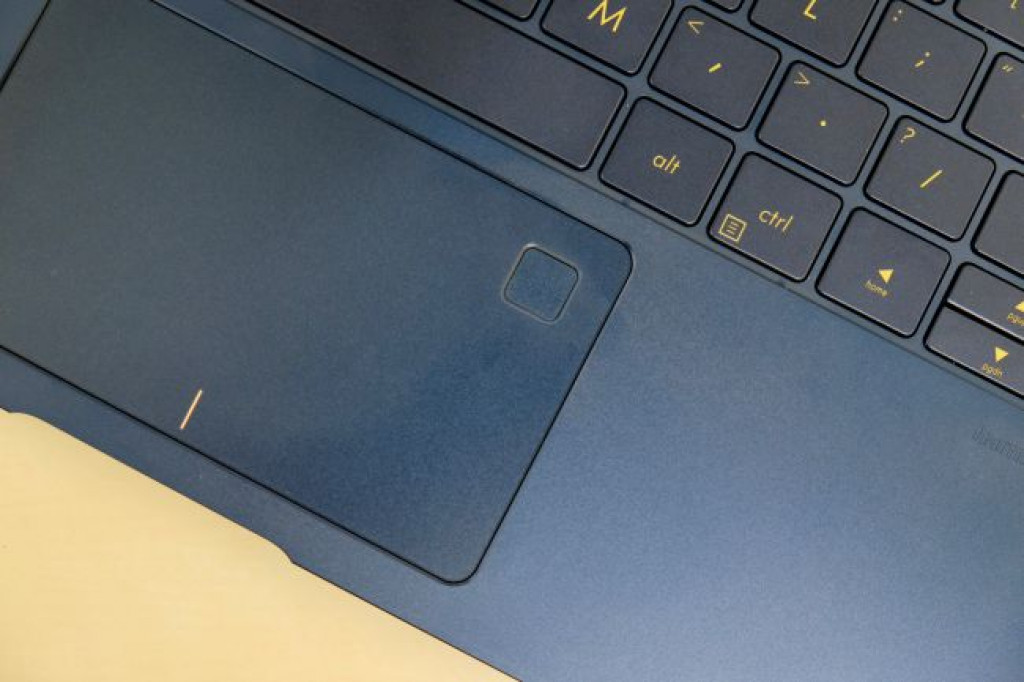
Reliable fingerprint sensor
Using Windows Hello to sign into a Windows 10 laptop is convenient and downright cool. Scanning your eyes or a fingerprint are popular implementations, with the ZenBook 3 having the latter.
Despite our complaints of the sensor’s location on the Zenbook 3, we have to praise just how accurate, reliable and fast this fingerprint scanner is. After teaching the laptop to recognize our fingerprint, it was rare that we would ever even see a prompt telling us that our finger wasn’t recognized.
Typically, after opening the lid and placing a finger on the sensor it was mere seconds until the device was unlocked and ready for use.
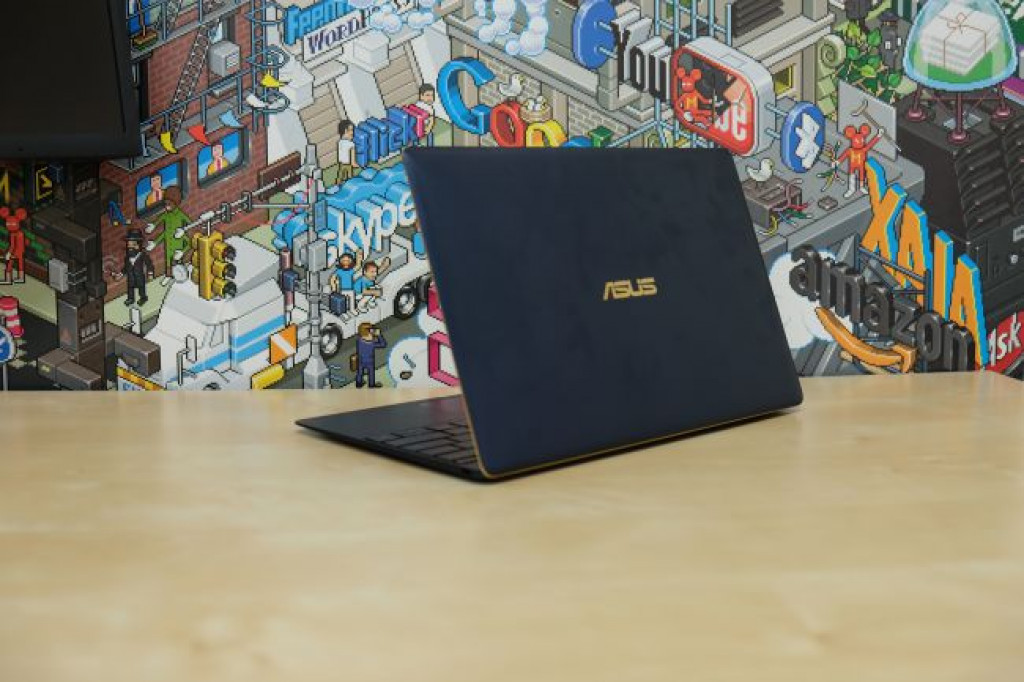
Final verdict
Coming in between the MacBook and the XPS 13 in price, the Asus ZenBook 3 is a serious contender for anyone looking for an Ultrabook that can easily handle even some of the more intense tasks you can throw at it.
The Asus ZenBook 3’s display is enough on its own, without bright and vivid it is. The lightweight and portable approach Asus took is also appreciated, and anyone that frequently travels will find this laptop a great device to get some work done with.
But, don’t expect all day battery, and don’t be surprised if you find yourself wanting to use an external keyboard.
All told, if you can look past the blemishes, the ZenBook 3 is a slick and powerful laptop that falls just short of some of the best.
Source: techradar.com





































